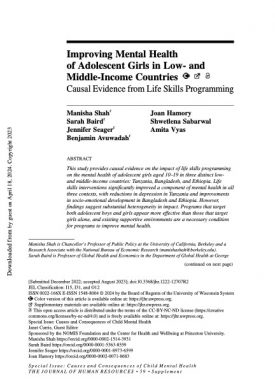This digest brings together evidence from two GAGE rapid country reviews and summarises what is known about Ethiopian adolescent girls’ capability development and the interventions meant to support them as they move toward adulthood. Touching on all six capability domains of GAGE’s conceptual framework — education and learning; bodily autonomy, integrity and freedom from violence; sexual and reproductive health, health and nutrition; psychosocial wellbeing; voice and agency; and economic empowerment — it concludes that despite a wealth of evidence, key gaps in our understanding remain. Specifically, we know too little about younger versus older adolescent girls and how to effect longer-term change.
That said, while gendered social norms and poverty continue to shape the lives of Ethiopian adolescent girls, the opportunities open to today’s girls are markedly improved compared to those available a generation ago. In part due to programming offered by the government and NGOs, girls are now more likely to attend school than boys, marriage and motherhood are increasingly delayed until later adolescence, and girls’ access to decision-making and paid employment is improving over time.
Suggested citation
Presler-Marshall, E. and Stavropoulou, M. (2017) Adolescent girls’ capabilities in Ethiopia: a synopsis of the evidence. London: Gender and Adolescence: Global Evidence.


